📑 Article Outline
- Introduction
- Understanding the Mythical Kailash Connection
- Why “Easiest” Means Different Things to Different Pilgrims
- The Five Kailash Yatras in India & Tibet
- A Quick Snapshot of Each Kailash
- Sacred Significance in Hinduism, Buddhism & Folklore
- How Do We Define “Easy” for Kailash Yatra?
- Criteria for Measuring Difficulty
- Trekking Difficulty
- Road Connectivity
- Weather Extremes
- Permits & Regulations
- Altitude & Acclimatization Needs
- Infrastructure (Food, Stays, Communication)
- Trekking Difficulty
- Kailash Yatra Comparison Table (At a Glance)
- 1. Kinner Kailash Yatra – For the Hardcore Spiritual Trekkers
- Mythological Importance (Lord Shiva’s Winter Home)
- Trekking Route, Distance & Challenges
- Best Time to Visit & Permit Details
- Who Should Attempt Kinner Kailash?
- 2. Shrikhand Mahadev Yatra – Toughest but Most Rewarding
- Story from Mahabharat: Pandavas & the Path to Swarga
- Trek Overview: Steep Ascent, Boulders, Glaciers & Nain Sarovar
- Weather, Risks, & Govt Registration Process
- Should You Attempt Shrikhand Mahadev Yatra?
- 3. Manimahesh Kailash Yatra – Easy To Moderate Trek
- Legends and Beliefs
- Cultural Experience
- Trekking Experience
- Personal Note
- 4. Adi Kailash Yatra – Easy to Moderate Optional Trek
- Legends and Beliefs
- Cultural Experience
- Trekking Experience
- Personal Note
- 5. Kailash Mansarovar Yatra – Easy to Moderate Optional Trek(Kora)
- Legends and Beliefs
- Mythological Importance
- Key Factors to Determine the Easiest Kailash Yatra
- Trekking Difficulty: Which Kailash Yatra Requires Less Walking?
- Road Connectivity: Which Kailash is Motorable Till the End?
- Permit Requirements: Which Yatra Has the Simplest Process?
- Altitude & Weather: Which One Is Gentler on the Body?
- Mythological & Spiritual Significance: Are All Kailash Equally Sacred?
- Why Many Pilgrims Now Prefer Adi Kailash Over Mount Kailash
- What to Pack (Shoes, Rainwear, Backpack, Jacket, Trekking Pole)
- FAQs
🧭 Introduction
Understanding the Mythical Kailash Connection
From the snow-clad slopes of Himachal to the tranquil valleys of Uttarakhand, five sacred peaks in and around India are revered as forms of Lord Shiva’s abode — Panch Kailash. Among them, Mount Kailash in Tibet is the holiest, believed to be the axis of the world. But in India too, four Kailash shrines echo the same divinity and mystery.
Many pilgrims ask:
“Which is the easiest Kailash Yatra?”
But what does “easy” truly mean when it comes to mountainous pilgrimages? Is it the distance? Or the altitude? Or is it the permit process, accommodation, and infrastructure?
This guide answers that question from every angle — spiritual, physical, and practical — and helps you choose the right Kailash based on your body, faith, and readiness.
Why “Easiest” Means Different Things to Different Pilgrims
For some, “easy” means no trekking at all.
For others, it means minimal permits and paperwork.
And for seasoned travelers, it’s about altitude and cold-weather risks.
That’s why in this article, we compare all Panch Kailash yatra on six key parameters — so you can decide which one is best for you.
🧱 The Panch Kailash Yatras in India & Tibet
Here are the Panch Kailash pilgrimages considered sacred in Sanatan Dharma and local beliefs:
| Kailash Name | Location | Region/State | Status |
| Mount Kailash | Tibet (China) | Outside India | International Yatra |
| Adi Kailash | Uttarakhand (India) | Kumaon | Domestic |
| Kinner Kailash | Himachal Pradesh | Kinnaur | Domestic |
| Shrikhand Mahadev | Himachal Pradesh | Kullu | Domestic |
| Manimahesh Kailash | Himachal Pradesh | Chamba | Domestic |
🔍 How Do We Define “Easy” for a Kailash Yatra?
Before jumping to comparisons, let’s understand what “easy” should mean for a spiritual mountain trek.
✅ Criteria for Measuring the Difficulty:
| Factor | Why It Matters |
| Trekking Difficulty | Long treks over glaciers, boulders, or landslides |
| Road Connectivity | Whether one can reach the base camp via road |
| Altitude Risks | AMS (Acute Mountain Sickness), oxygen levels |
| Permit Requirements | Inner Line Permit (ILP), Chinese Visa, Govt regs |
| Weather Window | Harshness of conditions, monsoon risks |
| Infrastructure | Availability of food, stay, toilets, and mobile network |
We’ll use these 6 pillars to compare each Kailash Yatra in a detailed chart.
📊 Kailash Yatra Comparison Table
| Kailash Yatra | Trek Length | Altitude | Permit Complexity | Road Access | Difficulty |
| Mount Kailash | ~52 km Parikrama | 5,638 m | High (China Visa + Liaison) | Road to Jyolingkong | Very High |
| Adi Kailash | Minimal | 4,777 m | ILP via SDM Office | Road till Jyolingkong | Easy |
| Manimahesh | 13 km | 4,080 m | Simple (State Entry) | Road till Hadsar | Moderate |
| Kinner Kailash | 24 km | 4,650 m | Local Permit Needed | Road till Tangling | Difficult |
| Shrikhand Mahadev | 32–35 km | 5,227 m | Govt Online Reg. | Road till Jaon | Very Difficult |
🥾 1. Kinner Kailash Yatra – For the Hardcore Spiritual Trekkers
State: Himachal Pradesh
Base Village: Tangling, near Reckong Peo
Trek Length: ~24 km (one side)
Altitude: 4,650 meters
Permit: Required (Inner Line), sometimes monitored by local authorities.
📜 Mythological Importance
According to Hindu beliefs, Kinner Kailash is where Lord Shiva held spiritual meetings with the divine Kinners — half-human, half-deity beings. Local folklore even believes that this is the winter home of Shiva, while Mount Kailash is the permanent one.
🧗 Trekking Experience
- One of the steepest climbs in India — over glaciers, slippery boulders, and snow patches.
- Trek takes 2–3 days, depending on weather and fitness.
- Very limited infrastructure, only basic tents or dhabas at Ganesh Park or Parvati Kund.
- Rock formations that change colors — a Shivling that appears to shift shape as the sun moves.
⚠️ Who Should Attempt?
Only fit and experienced trekkers with:
- High-altitude acclimatization
- Stamina to climb >4,500 m
- No major breathing or heart issues
This is not the easiest yatra by any means — but spiritually, it is intense and divine.
🏔️ 2. Shrikhand Mahadev Yatra – Toughest but Most Rewarding
State: Himachal Pradesh
Base: Jaon village (via Rampur Bushahr)
Trek Length: ~32–35 km one way
Altitude: 5,227 meters
Permit: Required. Himachal Govt opens online registration in July each year.
📖 Connection to Mahabharata & Pandavas
The legend says that the Pandavas took this route after the Mahabharata war on their way to heaven. The final rock peak of Shrikhand Mahadev, standing vertically like a Shivling, is said to be the place where Lord Shiva meditated.
🥶 Trekking Experience
- Cross dense forests, glacier fields, and river crossings.
- Camp at Thachdu, Kali Ghati, and Nain Sarovar (a holy lake near the final ascent).
- Trek can be life-threatening in bad weather — this is one of the toughest yatras in India.
- Infrastructure is improving, but no mobile network, freezing temperatures, and AMS risk make it dangerous.
🔥 Personal Note:
I once stayed in a tent near Bhojbasa during my Gaumukh trek — fire inside the tent, not under the stars, kept us warm in the cold. Shri Ram Baba Ashram provides shelter and food to tired pilgrims there, and such devotion exists even at Shrikhand’s camps, run by local villagers and volunteers.
🏔️ 3. Manimahesh Kailash Yatra – Easy to Moderate Trek
State: Himachal Pradesh
Base: Hadsar village (via Bhuntar, Chamba)
Trek Length: 14 km one way
Altitude: 4,082 meters
Permit: Required. Himachal Govt opens online registration in July each year.
📖Legends and Beliefs
- The name “Manimahesh” translates to “Jewel of Shiva.” Local lore states that the lake was created by the divine tears of Lord Shiva.
- Pilgrims believe that taking a dip in the lake cleanses the soul and removes the burden of sins.
- The surrounding temples and shrines add to the sacred atmosphere. Many locals share stories of miracles and blessings experienced during the yatra.
Cultural Experience
- Bharmour, the starting point, is steeped in history and tradition. The town’s ancient Chaurasi Temples provide a glimpse into the region’s spiritual past.
- The hospitality of the locals is another highlight. Visitors are often invited to partake in local festivals, savor traditional Himachali cuisine, and experience the warmth of mountain culture.
🥶 Trekking Experience
- Challenge:
The trail from Dhancho to Manimahesh Lake involves steep ascents and uneven, rocky paths. - With altitudes soaring above 13,000 feet, the risk of Acute Mountain Sickness (AMS) is real.
- Cross forests and river crossings.
- Camp at Dhancho waterfall and Manimahesh Lake.
- Trekking can be life-threatening in bad weather.
- Infrastructure is improving, but no mobile network, freezing temperatures, and AMS risk make it dangerous.
🔥 Personal Note:
I stayed in a tent/hut at Dhancho in a local dhaba during my Manimahesh Kailash Yatra. Dhancho is on a hill slope in front of a long, deep valley, so it is prone to having wind blizzards and rain after the afternoon.
So, if you are not carrying any tent or are not with a trekking company that provides a stay in the package, then make sure to reach here as early as possible to book your place for the night, or if you have time and stamina, reach Manimahesh Lake directly.
🏔️ 4. Adi Kailash Yatra – Easy to Moderate Optional Trek
State: Uttarakhand
Base: JolingKong for Adi Kailash Trek (via Dharchula, Pithoragarh)
Trek Length: 3 km for Parvati Sarovar, 2.5 km for Gaurikund one way
Altitude: 5945 meters (Peak), 4,420 meters Jolingkong
Permit: Required. The permit is issued by the SDM office (No Online) starting from May last each year.
📖Legends and Beliefs
- The name “Adi Kailash” translates to “The First Kailash.” Local lore states that when Lord Shiva was going back to Mount Kailash from Haridwar after his marriage, they stopped here for Goddess Parvati could rest.
- Pilgrims believe that Adi Kailash Yatra is somewhat equally rewarding as Mount Kailash.
- The Om Parvat is the main surrounding attraction; it is a big mountain that is shaped like 🕉️ naturally. This is a symbol of Lord Shiva.
Cultural Experience
Adi Kailash has its place in so many Hindu spiritual scriptures like the Ramayana and the Mahabharata. Chhota Kailash holds so much importance as the hideout of Pandavas during their exile period, for the Kali Mata temple where the mighty KALI river (Known as Sharda in Uttar Pradesh) originated, as the penance land of the Demon king Ravana and the sage Vyas, and especially as the abode of lord Shiva.
🥶 Trekking Experience
- Challenge:
The trail from Jolingkong to Parvati Sarovar and the trail to Gaurikund are not hard and have a gradual ascent, but the trek starts from 14,500 feet, which is already very high, even higher than the total height of Manimahesh Lake. - With altitudes soaring above 14,500 feet, the risk of Acute Mountain Sickness (AMS) is real.
- Cross dessert mountains, go through glaciers, and water crossings.
- Stay at Gunji or Napalchyu village. These villages are the junction points of the Adi Kailash and Om Parvat road.
- Trekking can be life-threatening in bad weather.
- Infrastructure is improving, but no mobile network, freezing temperatures, and AMS risk make it dangerous.
🔥 Personal Note:
I stayed in a tent and camped by myself at Napalchyu village during my Adi Kailash and Om Parvat Yatra. The two villages, Napalchyu and Gunji, are almost connected, although Gunji is more famous. I stayed at Napalchyu because I found a good spot there. “PRADHAN”(Chief) of Napalchyu, Mr. Narendra, allowed me to pitch my tent on the Gram Panchayat Land. Unless it could become a nightmare, because there was a heavy rain with some snowfall for two days straight. Snow with rain deadly combo.
So, if you are not carrying any tent or are not with a trekking company that provides a stay in the package, then make sure to reach here as early as possible to book your place for the night.
🏔️ 5. Kailash Mansarovar Yatra – Easy to Moderate Optional Trek(Kora)
Location: China
Base: Gangdise Mountains of Tibet (via Uttarakhand, Sikkim, Nepal)
Trek Length: 52 km Kora
Altitude: 6,638 meters (Peak), 15000 meters Mansarovar Lake.
Permit: Required. Chinese Visa, Tibet Entry Permit, Alien Permit.
📖Legends and Beliefs
- Kailash Mansarovar or Mount Kailash is the abode of Lord Shiva and Goddess Parvati.
- Pilgrims believe Kailash Mansarovar is the center of the Earth.
- Kailahs Mansarovar is a sacred mountain not only in SANATAN DHARMA, but also in Buddhism, Jainism, and Bonism.
Mythological Importance
- Mount Kailash or Kailash Mansarovar is home to Lord Shiva and his companions.
- All the devotees of lord Shiva, whether they are humans, other lords, or Rakshas, may be like Ravan came to seek MOKSHA and take the blessings of lord Shiva.
- There are two natural lakes alongside Kailash Mansarovar, one is Mansarovar Taal (Lake) and the second is Rakshas Taal (Lake).
- Mansarovar taal is believed to have been made by the Devtas(Lords of Heaven). Mansarovar is a freshwater lake at a height of almost 15000 feet above sea level. The water in Mansarovar Lake remains calm in any given weather condition.
- Rakshas taal is believed to be made by Ravan himself(Yes, the same Ravan, ruler of Lanka, who was killed by Lord Ram). Ravan was a great devotee of lord Shiva and visited Kailash Mansarovar regularly. When he found that Devtas had made a lake beside Mount Kailash then he also made a saltwater lake west of Lake Mansarovar to please Lord Shiva and to show his superiority and establish his dominance over the Devtas.
🧭 Comparative Chart: Kailash Yatras Based on Difficulty Parameters
| Kailash Name | Trek Distance (One Way) | Motorable Access | Permit Process | Weather Extremes | Altitude (Max) | Overall Difficulty |
| Adi Kailash | 2–3 km optional (Jyolingkong) | Yes (to Basecamp) | Moderate (via KMVN or private operators) | Manageable | 15,500 ft | Easy–Moderate |
| Kinner Kailash | 18 km steep | Up to Tangling Village | None officially | Harsh & sudden changes | 15,900 ft | Hard |
| Shrikhand Mahadev | 32 km, very steep | Jaon Village only | No permit, but registration is needed | Extremely harsh | 17,150 ft | Very Hard |
| Manimahesh Kailash | 13–14 km moderate | Up to Hadsar | No major permits | Monsoon issues | 13,500 ft | Moderate |
| Mount Kailash (Tibet) | 52 km parikrama | Up to Darchen | Highly restricted (via MEA or authorized operator) | Very harsh + political limits | 18,600 ft | Very Hard |
🚩 Key Factors to Determine the Easiest Kailash Yatra
Let’s now go deeper into each criterion of “easiness” to help you choose your ideal Kailash yatra.
1. Trekking Difficulty: Which Kailash Yatra Requires Less Walking?
Adi Kailash is the clear winner here. You can drive up to Jyolingkong, and the actual trek (to reach Parvati Sarovar and glimpse Adi Kailash) is very short – barely 2–3 km if at all.
In contrast:
- Shrikhand Mahadev demands 35 km of one of the toughest Himalayan climbs.
- Kinner Kailash is steep, rocky, and has a notorious boulder zone.
- Mount Kailash parikrama (52 km) is a high-altitude, with Dolma La pass (~18,600 ft).
- Manimahesh has a moderately challenging trek of around 14 km from Hadsar.
✅ Verdict: Adi Kailash is the easiest for those who want minimal trekking.
2. Road Connectivity: Which Kailash is Motorable Till the End?
- Adi Kailash (via Dharchula – Gunji – Jyolingkong) is connected via a proper BRO-made road.
- Manimahesh Kailash is also motorable till Hadsar, beyond which the trek begins.
- Mount Kailash requires flying to Nepal and driving to Darchen via Tibet, which is expensive and logistically difficult.
- Kinner and Shrikhand Kailash are not motorable – you have to start walking from the base villages.
✅ Verdict: Adi Kailash is best for road travel lovers.
3. Permit Requirements: Which Yatra Has the Simplest Process?
| Kailash Name | Permit Complexity |
| Adi Kailash | Moderate – You need an Inner Line Permit (ILP) for Indian citizens, issued in Dharchula or via KMVN/private tour operators |
| Mount Kailash (Tibet) | High–Needs China Visa, MEA approval, group travel, fixed packages |
| Shrikhand, Kinner, Manimahesh | Low or none (self-declared registration at max) |
✅ Verdict: Manimahesh or Adi Kailash are the easiest in terms of paperwork. Mount Kailash is the hardest.
4. Altitude & Weather: Which One Is Gentler on the Body?
The altitude gain and weather stability directly affect your comfort and risk of AMS (Acute Mountain Sickness).
- Adi Kailash sits at ~15,500 ft, but you gain height gradually. The weather is manageable during the season (May–October).
- Shrikhand and Mount Kailash are above 17,000 ft and pose a serious risk of AMS.
- Manimahesh is at a lower altitude and hence more beginner-friendly.
- Kinner Kailash has erratic weather and no shelter zones between climbs.
✅ Verdict: Adi Kailash is safer, but Manimahesh is even more forgiving in terms of altitude.
5. Mythological & Spiritual Significance: Are All Kailash Equally Sacred?
From a spiritual lens:
- Mount Kailash is the original, supreme abode of Shiva, revered by Hindus, Buddhists, Jains, and Bönpo alike.
- Adi Kailash is often referred to as Baba Kailash, said to be Lord Shiva’s replica in Indian territory.
- Kinner Kailash and Shrikhand Mahadev are believed to be places visited by Lord Shiva during his penance and meditations.
- Manimahesh Kailash is where Lord Shiva is said to have performed his cosmic dance after marrying Parvati.
While Mount Kailash holds unmatched reverence, many devotees choose the Indian Kailash peaks due to accessibility and safety.
✅ Verdict: All are sacred, but for most Indians, Adi Kailash offers a deeply satisfying spiritual journey with less hassle.
🧘♂️ Why Many Pilgrims Now Prefer Adi Kailash Over Mount Kailash
- No international boundaries to cross
- Much cheaper than a Tibet trip (Mount Kailash yatra can cost ₹2–3 lakh+)
- Quieter, less commercialized, and raw
- Rich mythology around Shiva, Parvati, and the Pandavas
- An optional extension to Om Parvat, believed to be the symbol of divine “Om”, is carved by nature on a Mountain.
🔱Gears You Should Carry for Adi Kailash or Other Yatras
If you’re planning any Kailash yatra, you’ll need gear for comfort, warmth, and altitude. Consider recommending or linking to:
| Gear Type | Recommended Items |
| Trekking Shoes | Waterproof, ankle-high, with good grip |
| Backpack | 40–60L with rain cover |
| Warm Layers | Thermals, fleece, down jacket |
| Rain Gear | Poncho + rainproof pants |
| Sleeping Bag | For 0°C to –5°C |
| Misc | Trek poles, torch, water purifier |
👉
✅ Final Verdict: Which is the Easiest Kailash Yatra?
| Rank | Kailash | Why? |
| 🥇 1 | Adi Kailash | Motorable, short trek, spiritual, Indian territory, safer |
| 🥈 2 | Manimahesh | Moderate trek, sacred, scenic, no permits |
| 🥉 3 | Mount Kailash | Spiritually supreme but logistically toughest |
For most Indian devotees, Adi Kailash offers the perfect balance of ease, devotion, and experience.




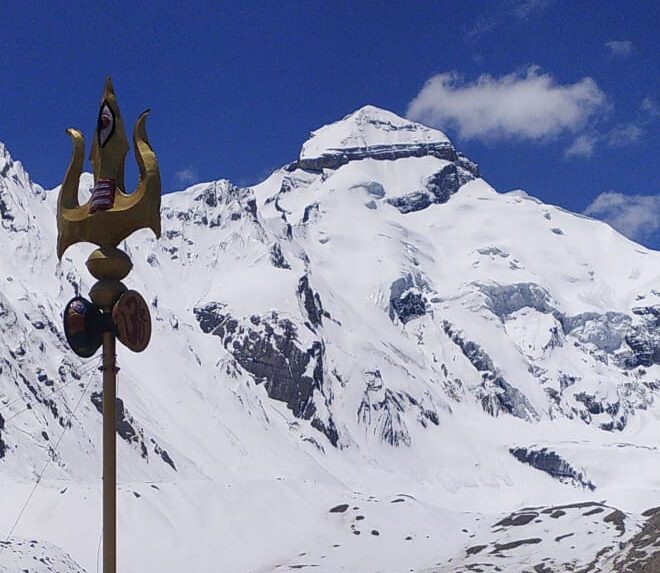


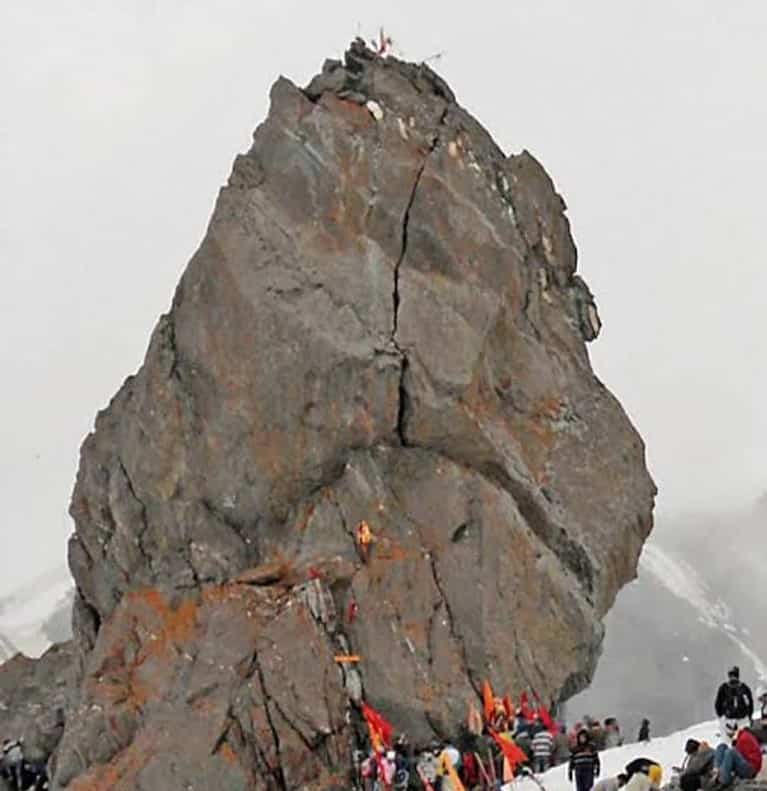
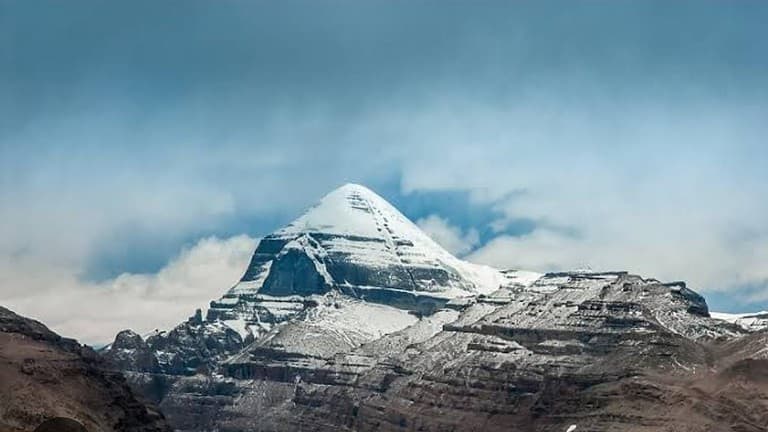
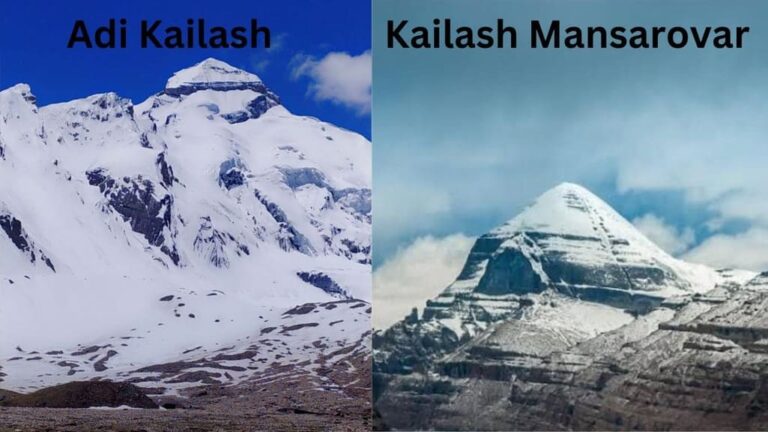
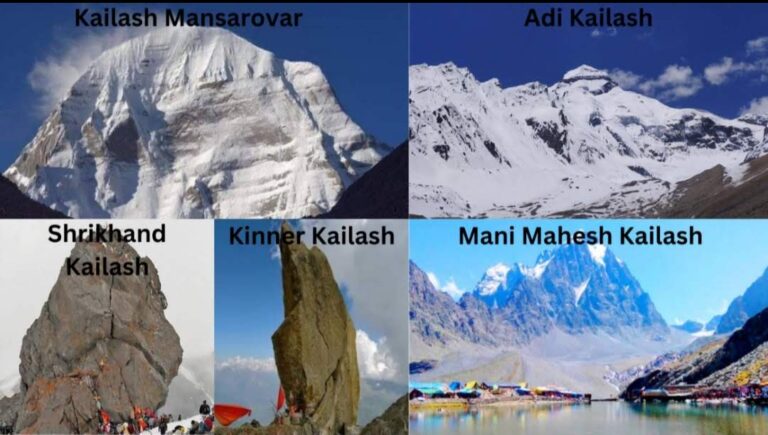
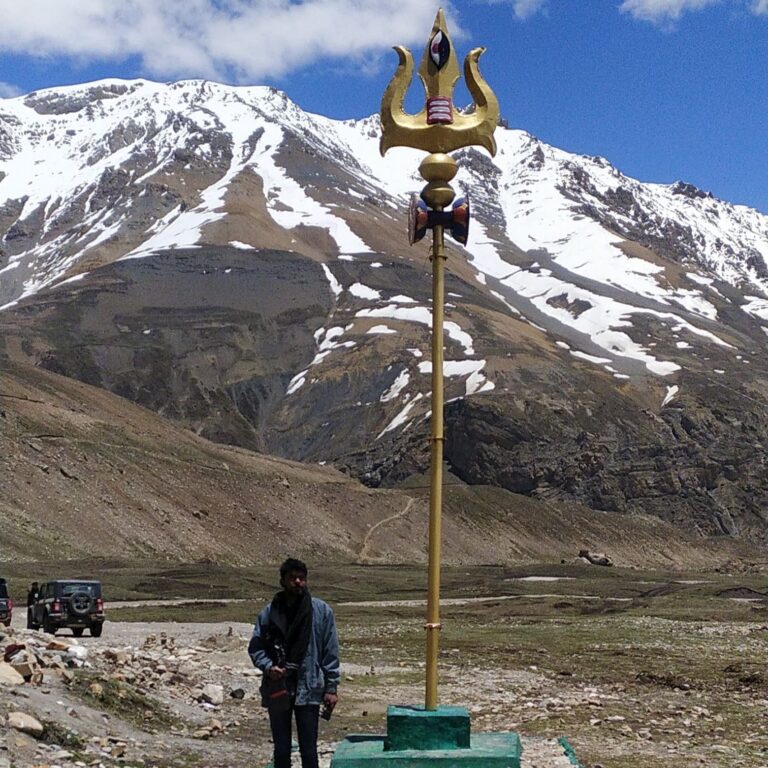
2 Comments